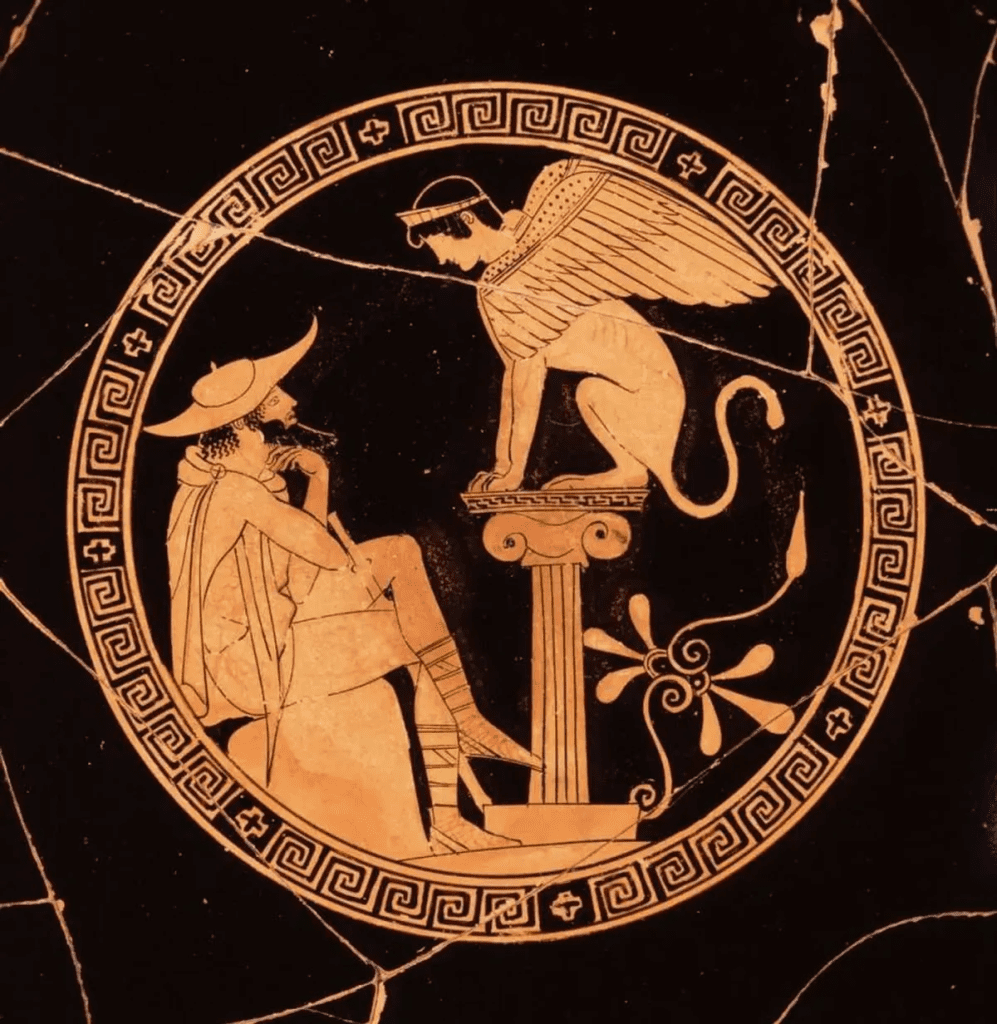The Riddle of the Sphinx is one of the most famous and enduring riddles in history, rooted deep in Greek mythology and storytelling. It captures the imagination with its simplicity, its haunting imagery, and the mystique of the Sphinx herself, who guarded the city of Thebes and challenged all who dared to pass with her enigmatic question. So, what exactly is the riddle, what does it mean, and why has it resonated throughout centuries? Let’s dive into the origins and symbolism of this classic riddle.
In Greek mythology, the Sphinx was a creature with the body of a lion, the wings of a bird, and the face of a woman. She terrorized the city of Thebes, devouring anyone unable to answer her riddle. The riddle was posed to Oedipus, a prince on a journey, who was destined to become king by solving this riddle. His answer not only saved Thebes but also freed the people from the monstrous Sphinx, who, upon hearing the correct answer, threw herself off a cliff.
The riddle goes as follows:

The answer? “Humans” This answer speaks to the stages of human life and uses metaphor to describe our journey from birth to death. But what makes this riddle so timeless is the profound insight it offers into the human condition.
The riddle of the Sphinx represents the stages of human life, with each time of day symbolizing a different phase:
- Morning (Childhood): A human begins life crawling on all fours as a baby, symbolized by “four legs in the morning.” Morning, here, signifies the beginning of life, or youth.
- Afternoon (Adulthood): As we grow, we learn to walk on two legs. In the riddle, “two legs in the afternoon” represents adulthood, the prime of life when we stand tall and navigate the world independently.
- Evening (Old Age): With old age often comes the need for support, such as a cane. “Three legs in the evening” refers to the end of life when one relies on a third support, the cane, symbolizing wisdom and experience but also vulnerability.
- Night (Death): Finally, “no legs at night” signifies death, the final rest, and the end of one’s journey through the day that is life.
Each phase described by the Sphinx reflects our connection to time and the natural cycle of life. It’s a riddle that transcends ancient Greece, embodying a universal truth about the stages of human existence.
Oedipus, known for his intelligence and sharp mind, was able to answer the riddle because he possessed the unique combination of wisdom and experience needed to understand it. His ability to solve the riddle represented his alignment with fate and destiny—traits that were heavily significant in Greek culture.
His success brought him great rewards but also served as the beginning of his tragic story. In Greek mythology, it’s often the heroes who possess intellect, bravery, and even arrogance who solve the riddles and fulfill prophecies, but at a cost. Oedipus’s triumph over the Sphinx led to his downfall, as he unwittingly fulfilled the prophecy that he would kill his father and marry his mother. The riddle, therefore, serves as a turning point, foreshadowing the inevitable complexities of fate.
The Sphinx herself is a symbol rich with meaning. Often associated with mystery and danger, she represents the darker side of human existence—forces that we cannot control, knowledge that can be perilous, and the inevitability of life’s challenges.

- The Sphinx as a Guardian of Knowledge: The Sphinx poses a riddle as a way of guarding wisdom and knowledge. Only those who are truly insightful can pass her test. In ancient cultures, riddles were often considered tests of character as well as intellect.
- The Riddle as a Reflection of Life: The riddle doesn’t just describe human life stages; it reflects a cycle that everyone undergoes, regardless of wealth, power, or status. By framing the question in terms of time (morning, afternoon, evening, night), it reminds us that life is fleeting and that we’re all bound by the same journey.
The Riddle of the Sphinx is more than an ancient puzzle; it’s a profound reflection on life, aging, and mortality. Its enduring relevance reminds us that wisdom often comes in recognizing our place in the natural cycle. By walking on “four legs in the morning” and “two in the afternoon,” we pass through the stages of life, each phase building upon the last, until we reach our final evening.
The story of Oedipus and the Sphinx lives on as a reminder of the power of knowledge, the inevitability of fate, and the journey we all share. As we ponder this riddle, it’s an invitation to reflect on our own lives—where we’ve been, where we are, and where we’re going. And like Oedipus, we’re reminded that sometimes the answers we seek lie within the questions themselves.


